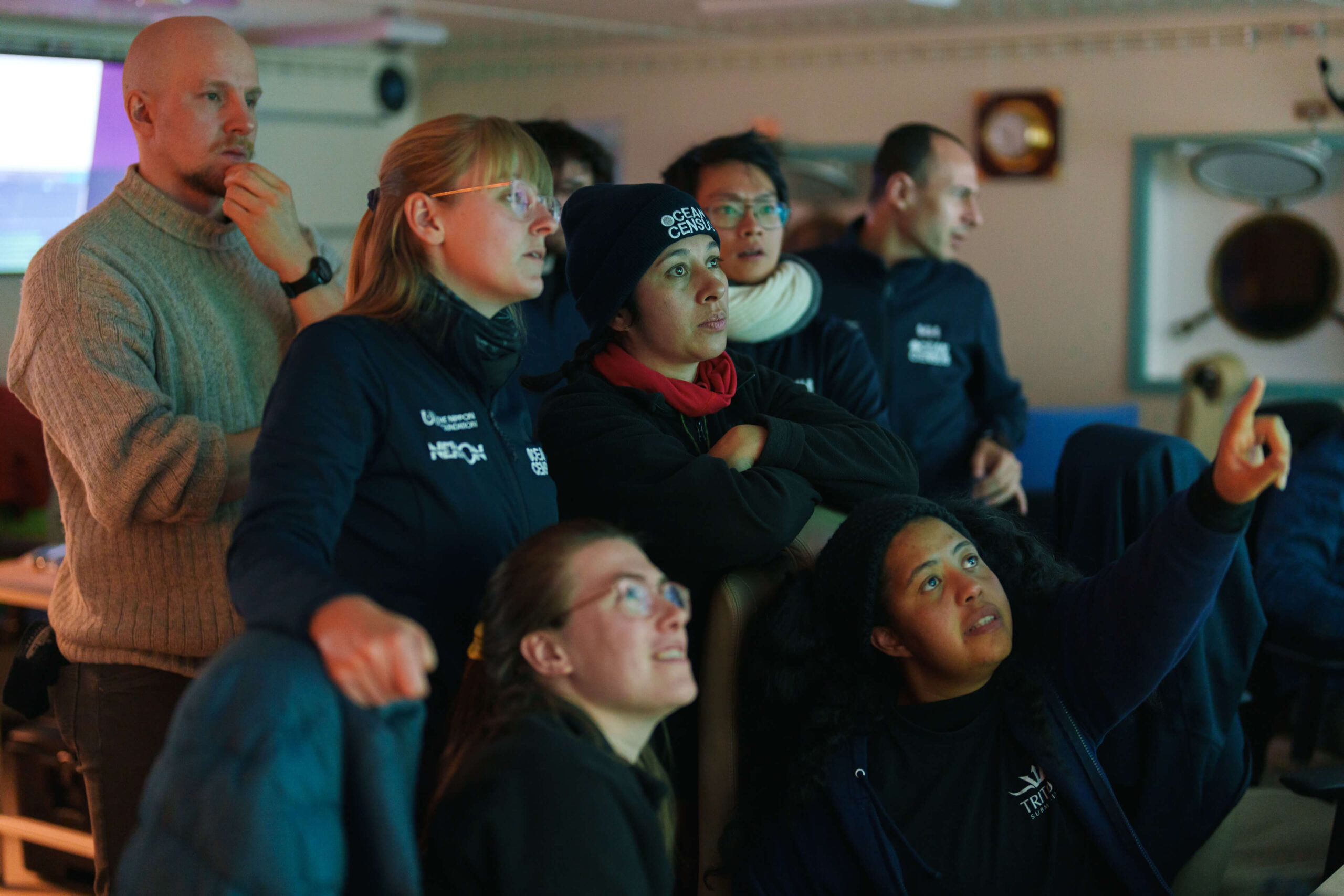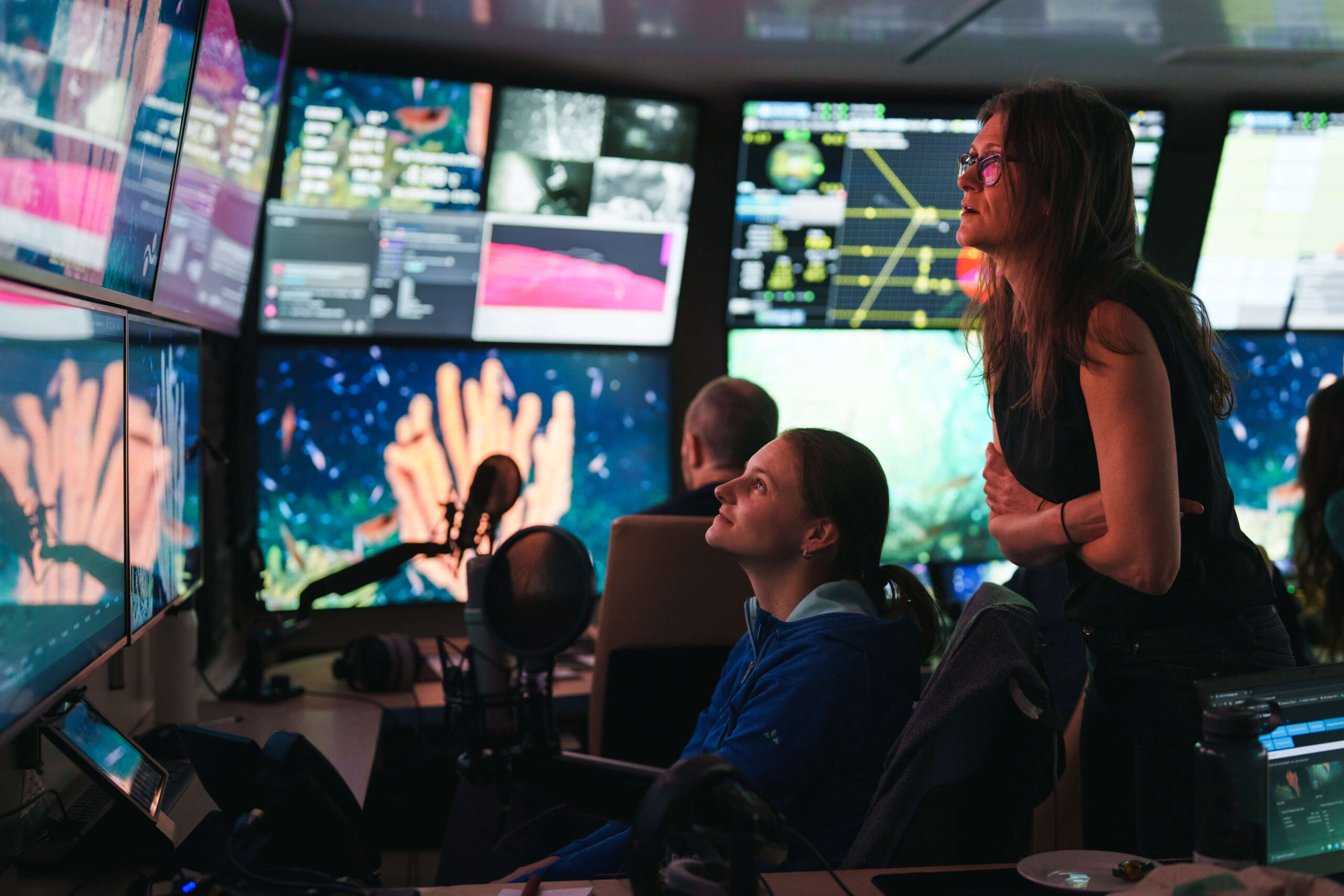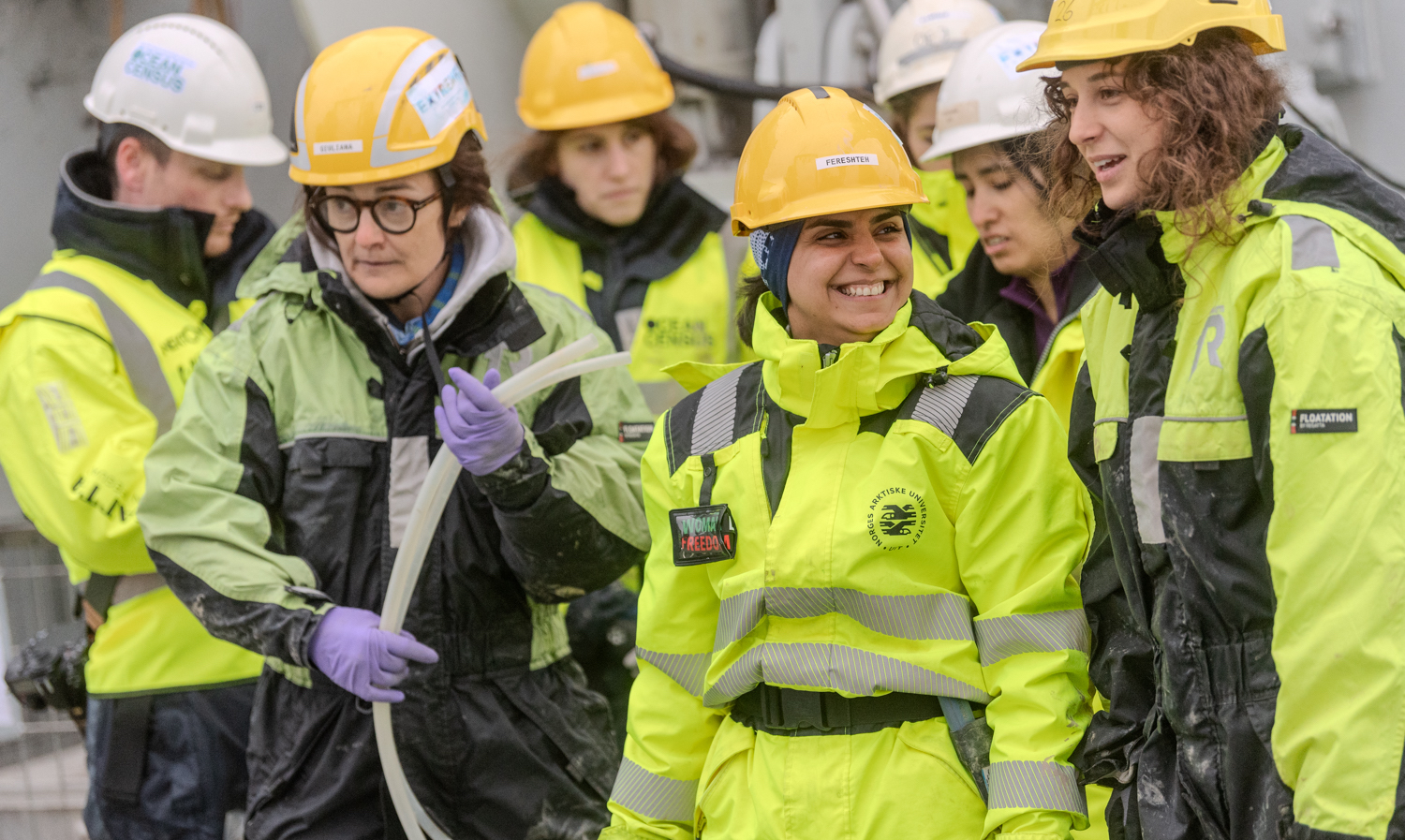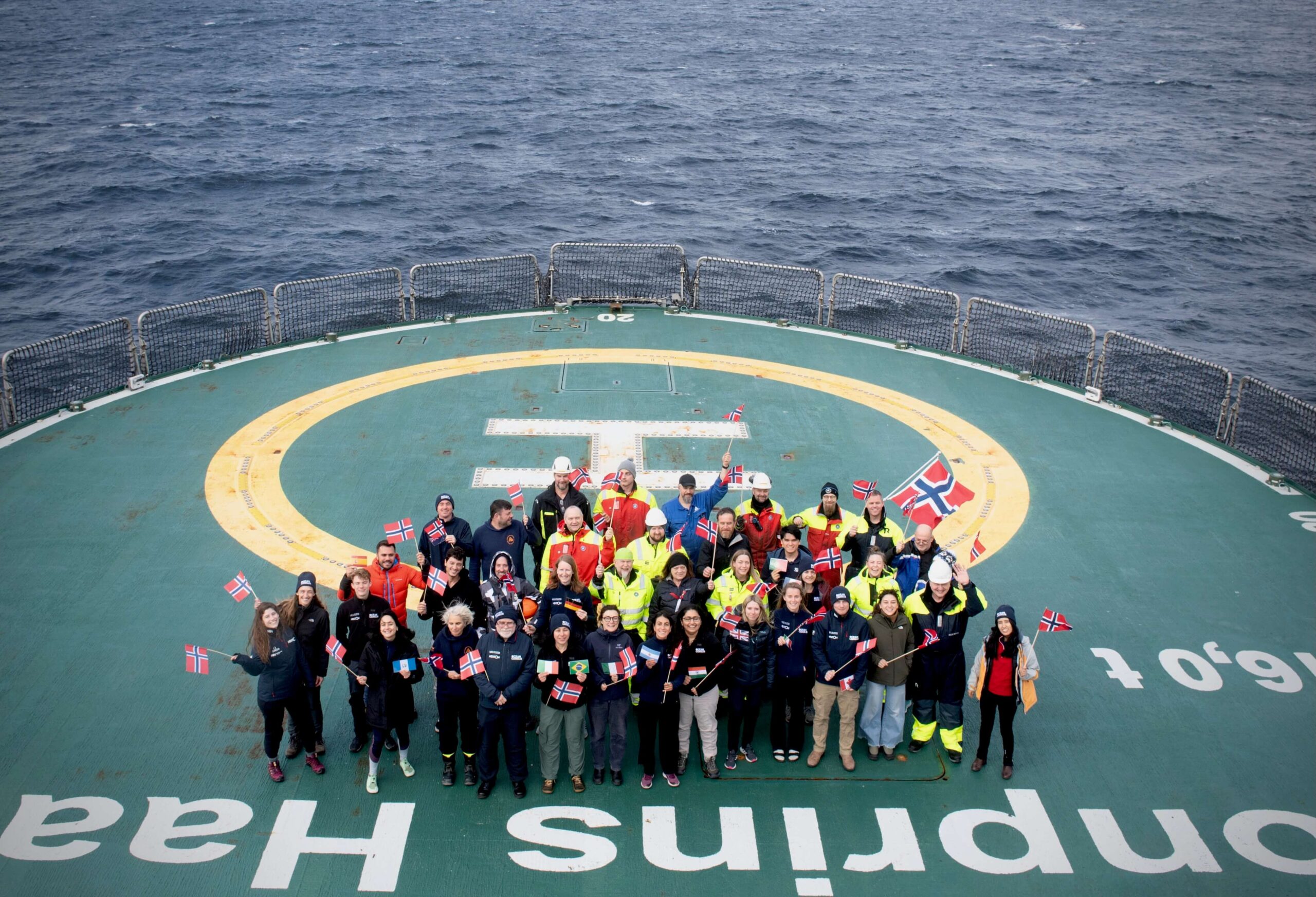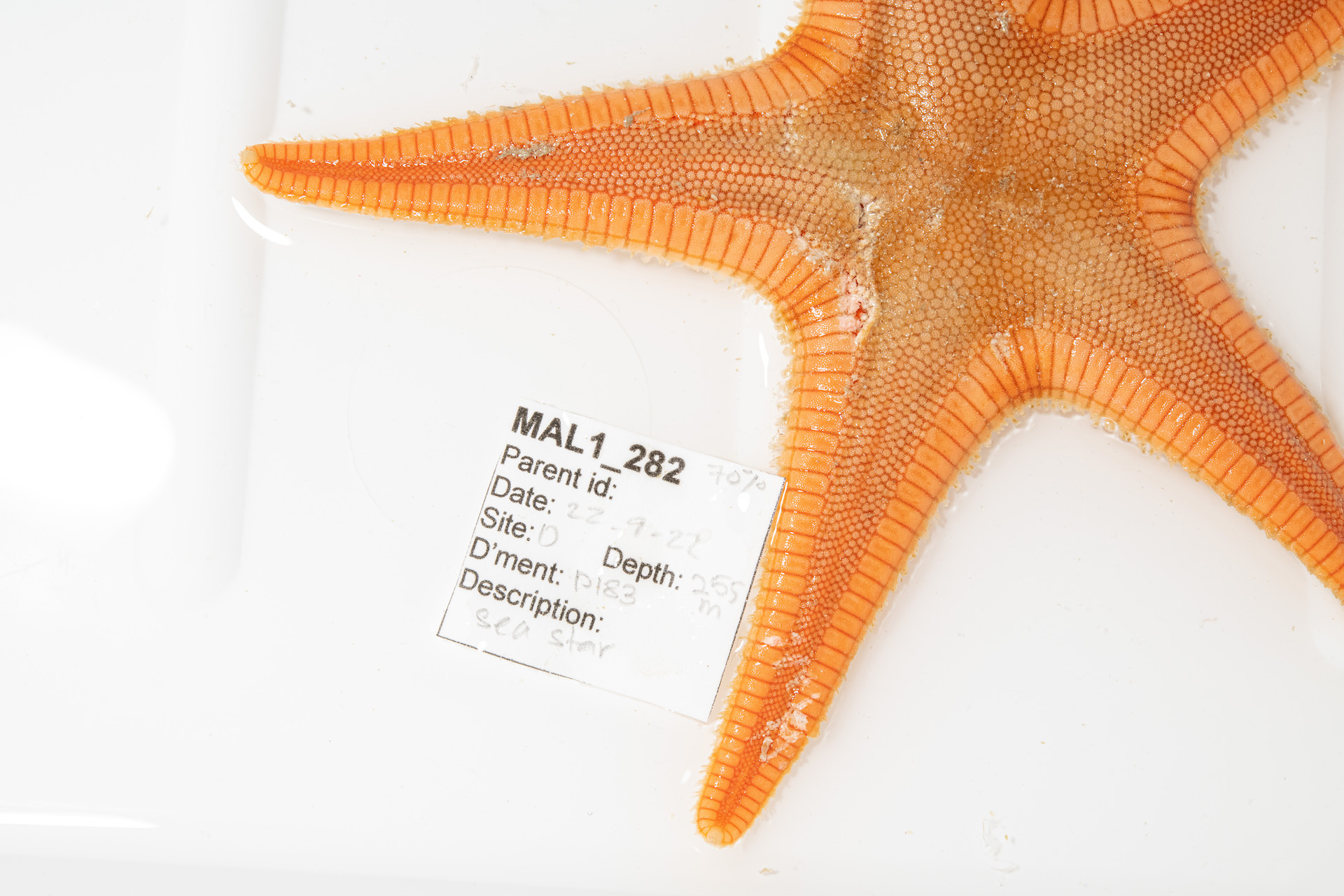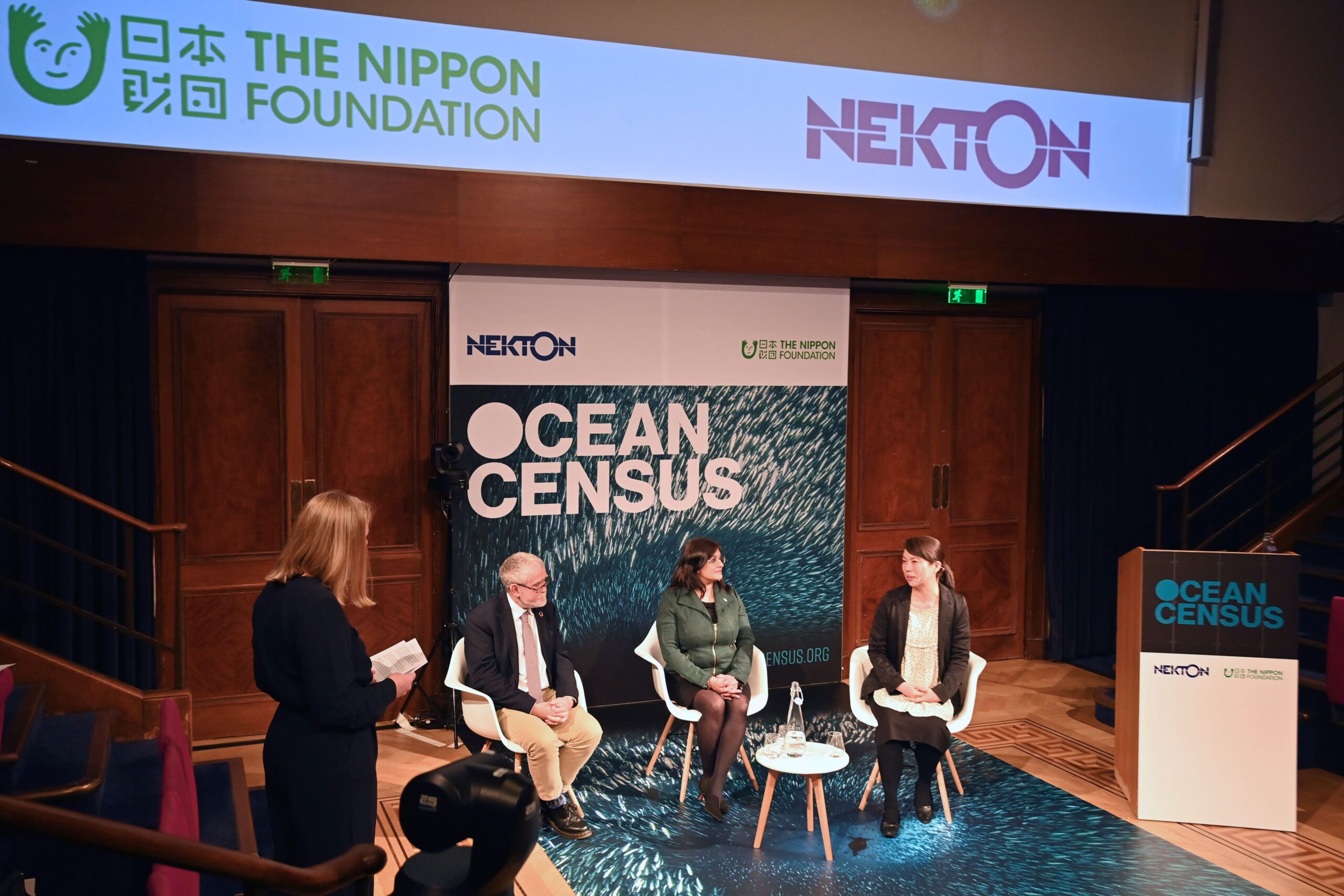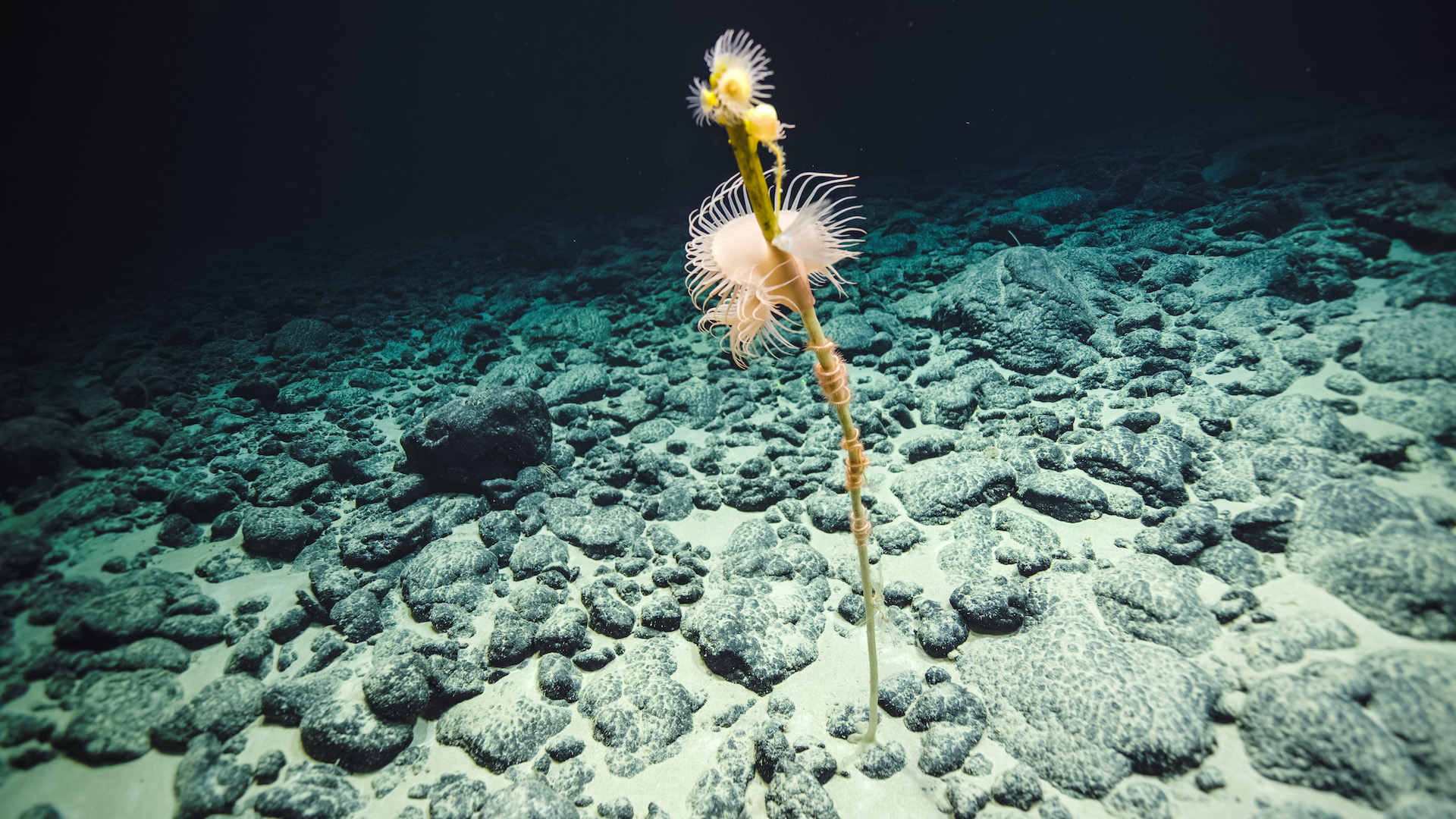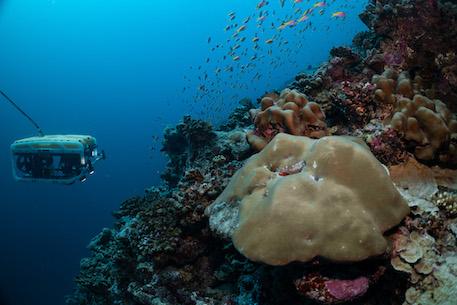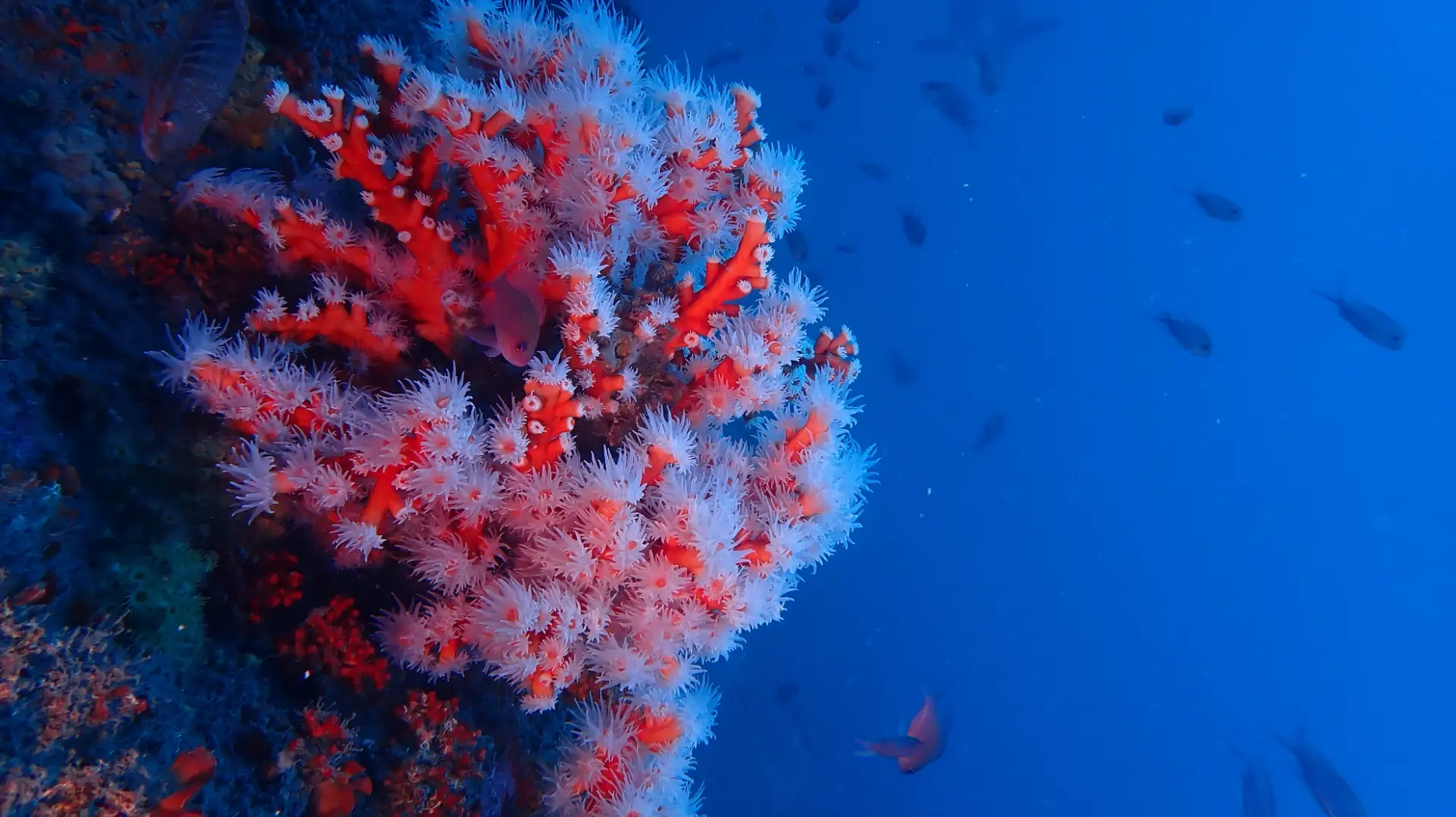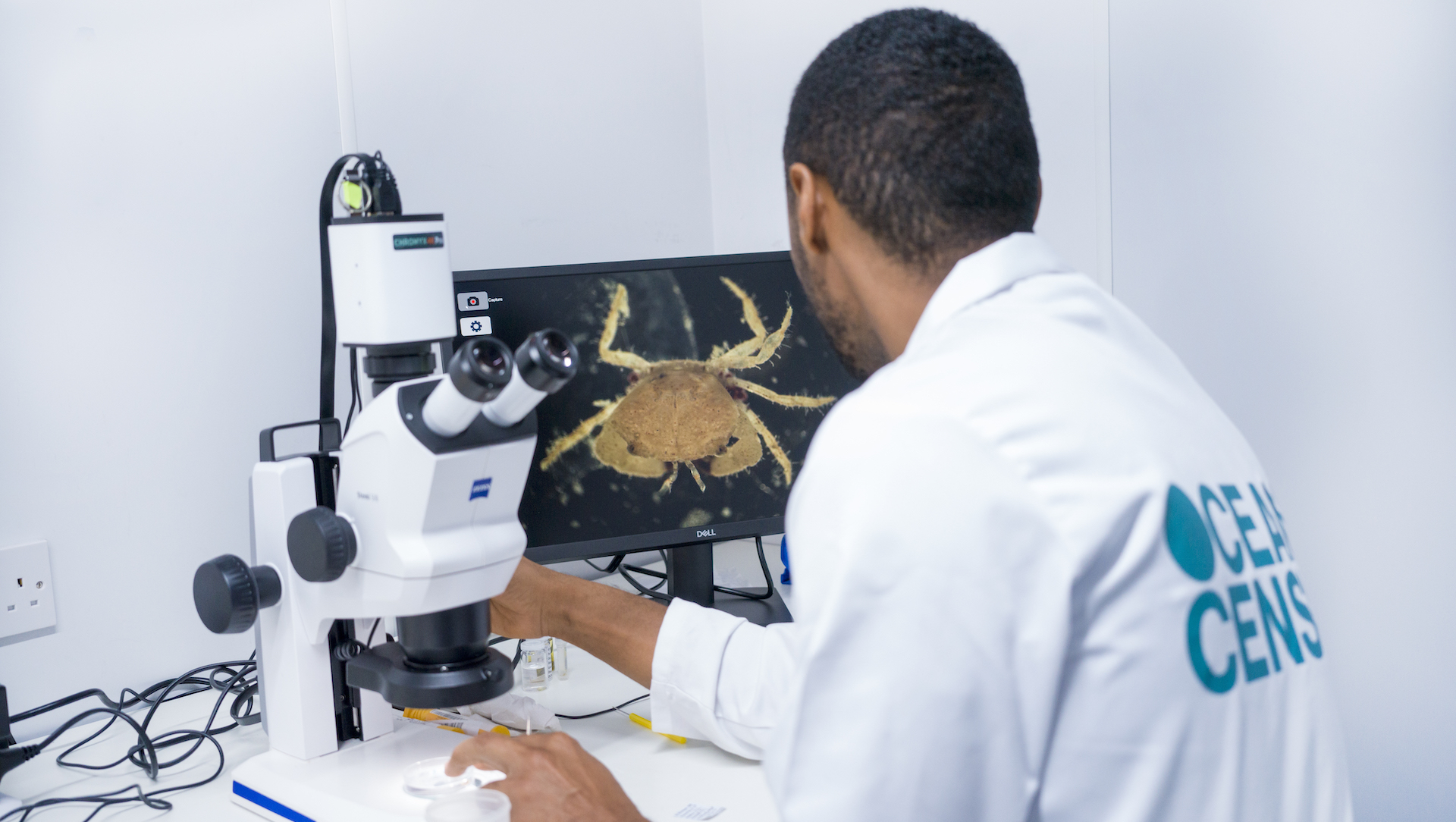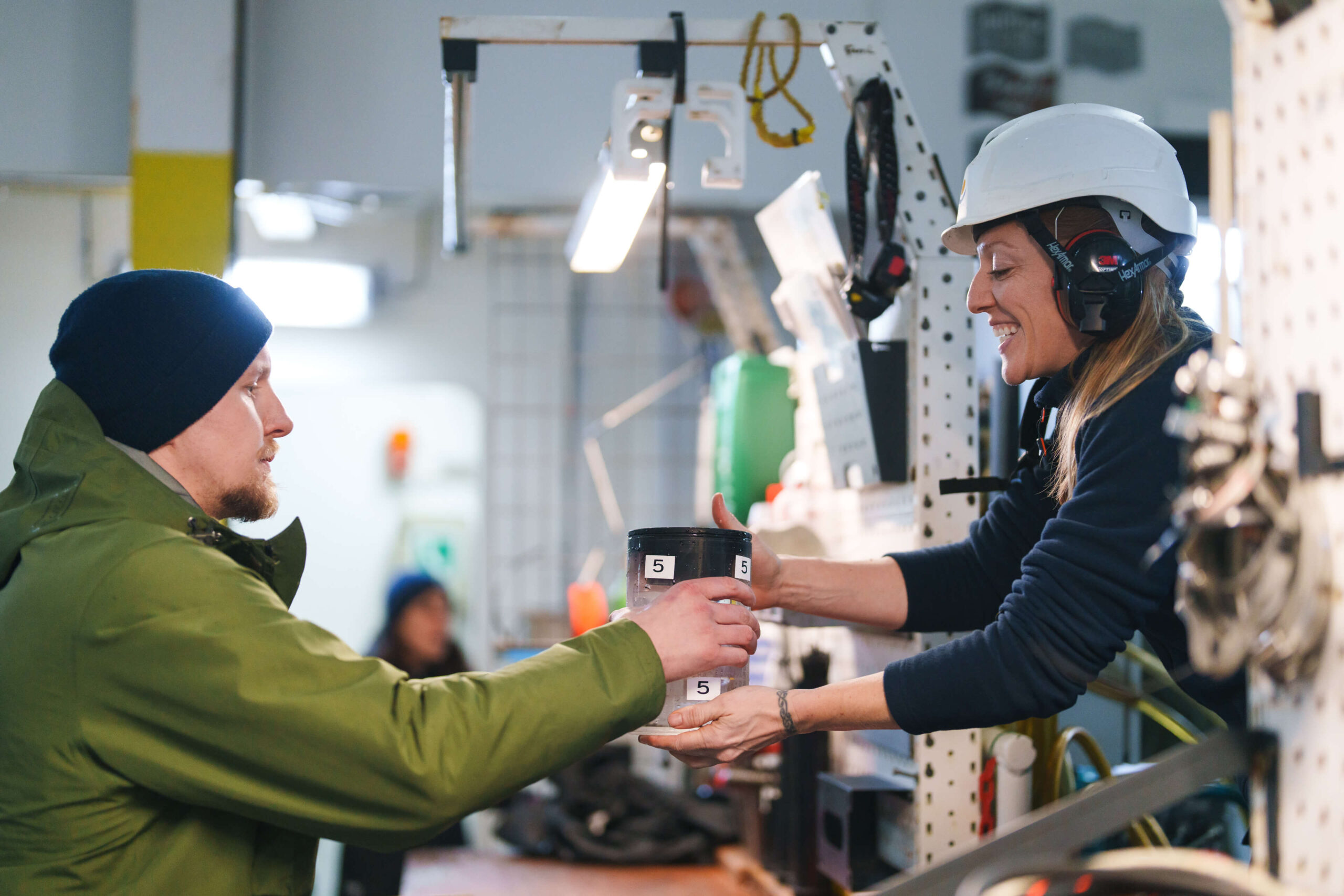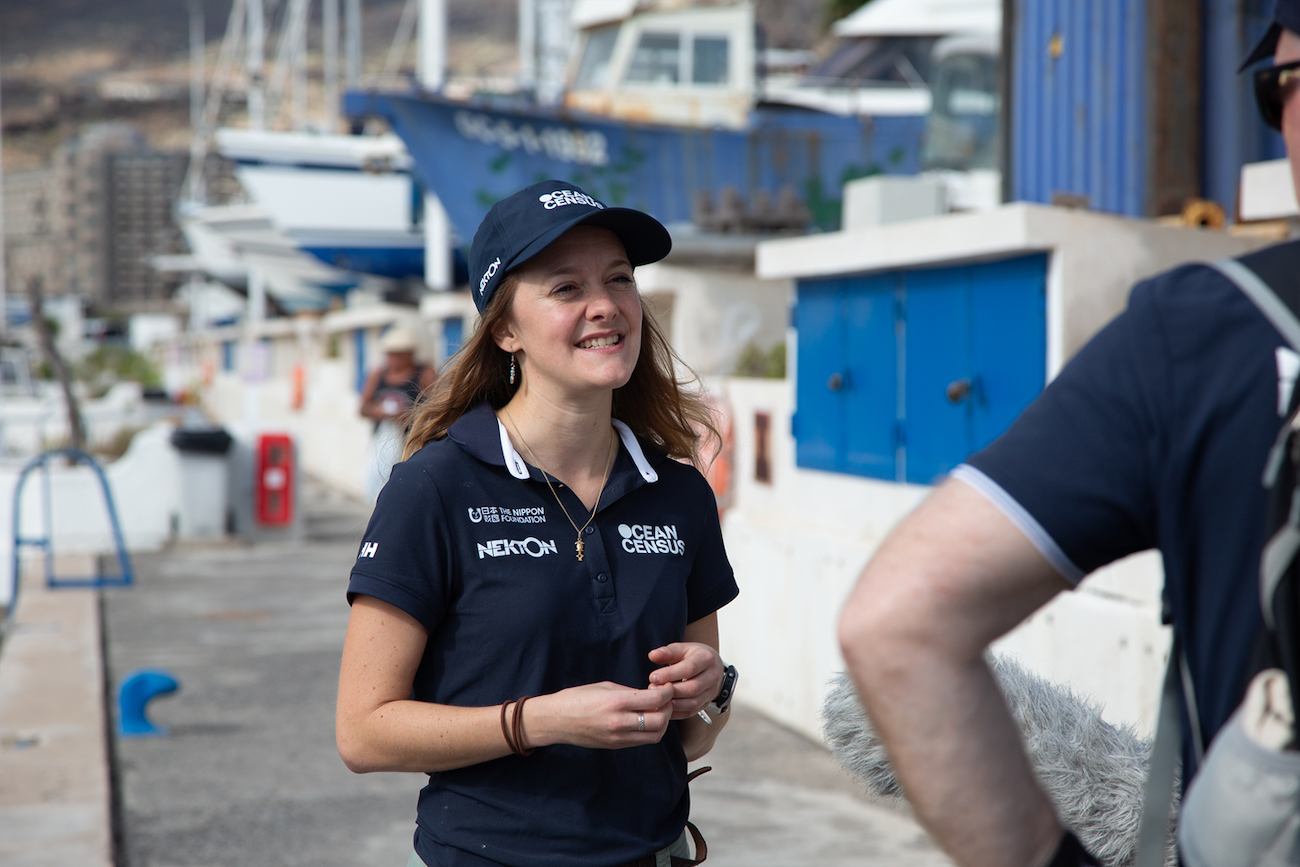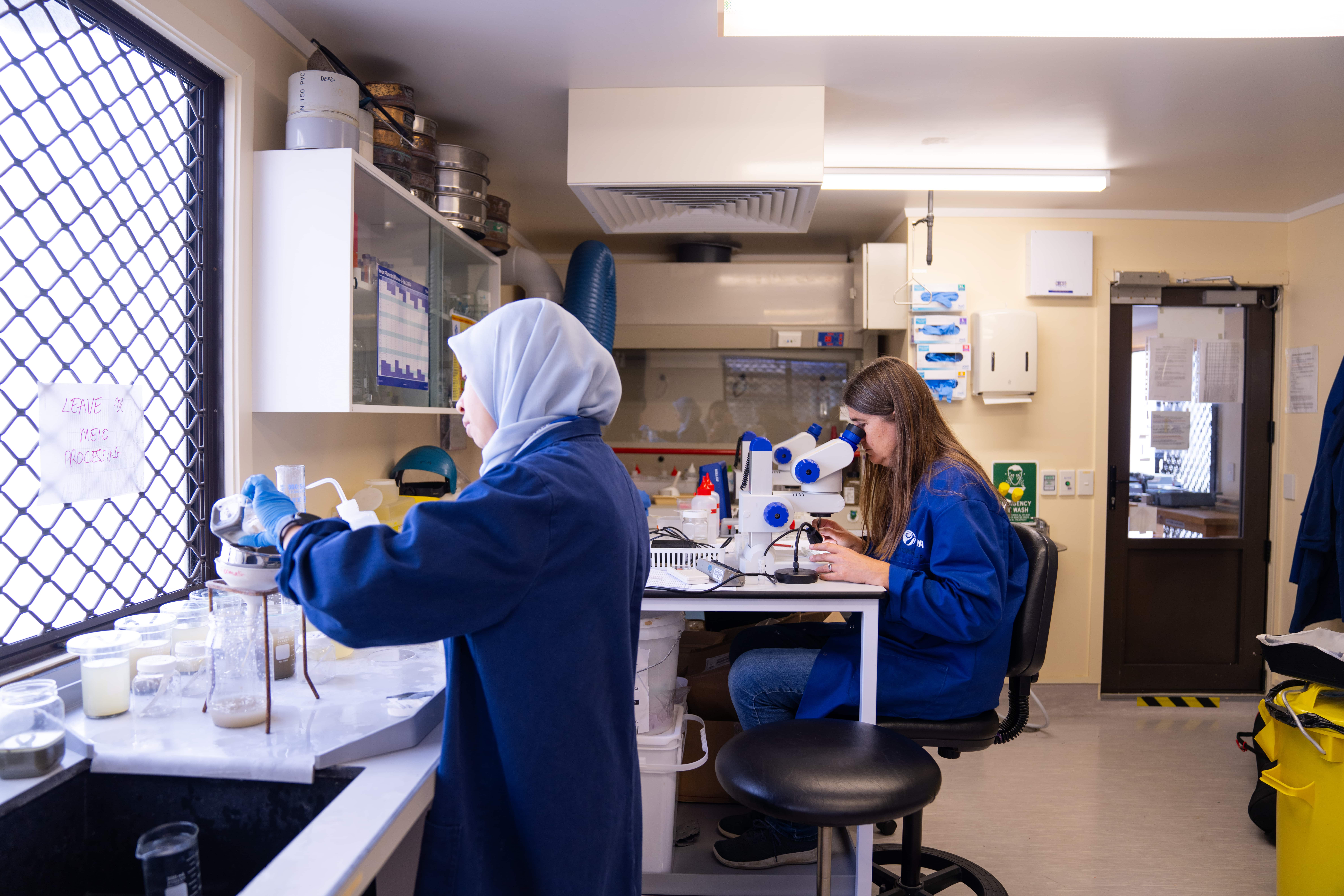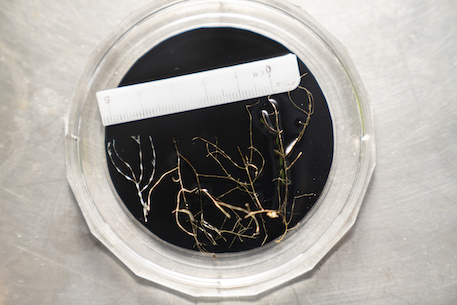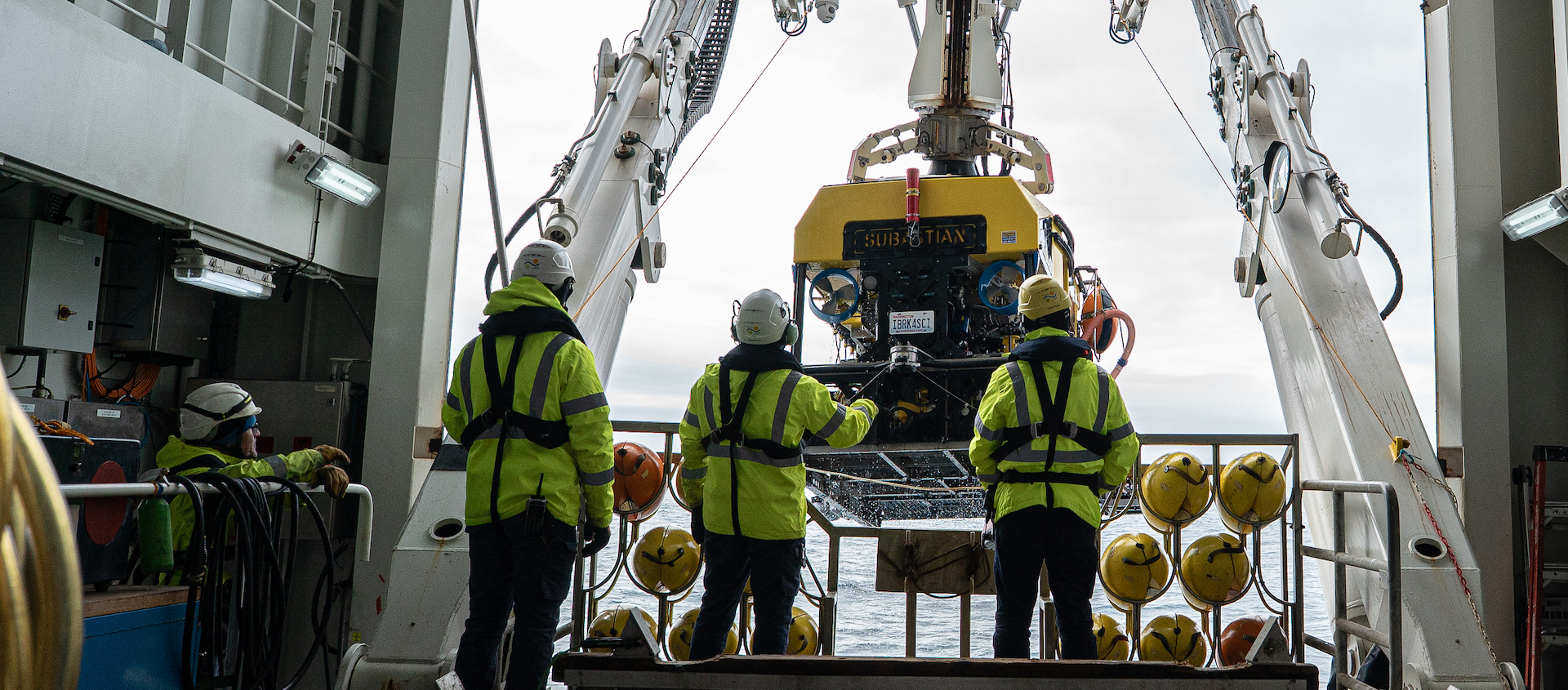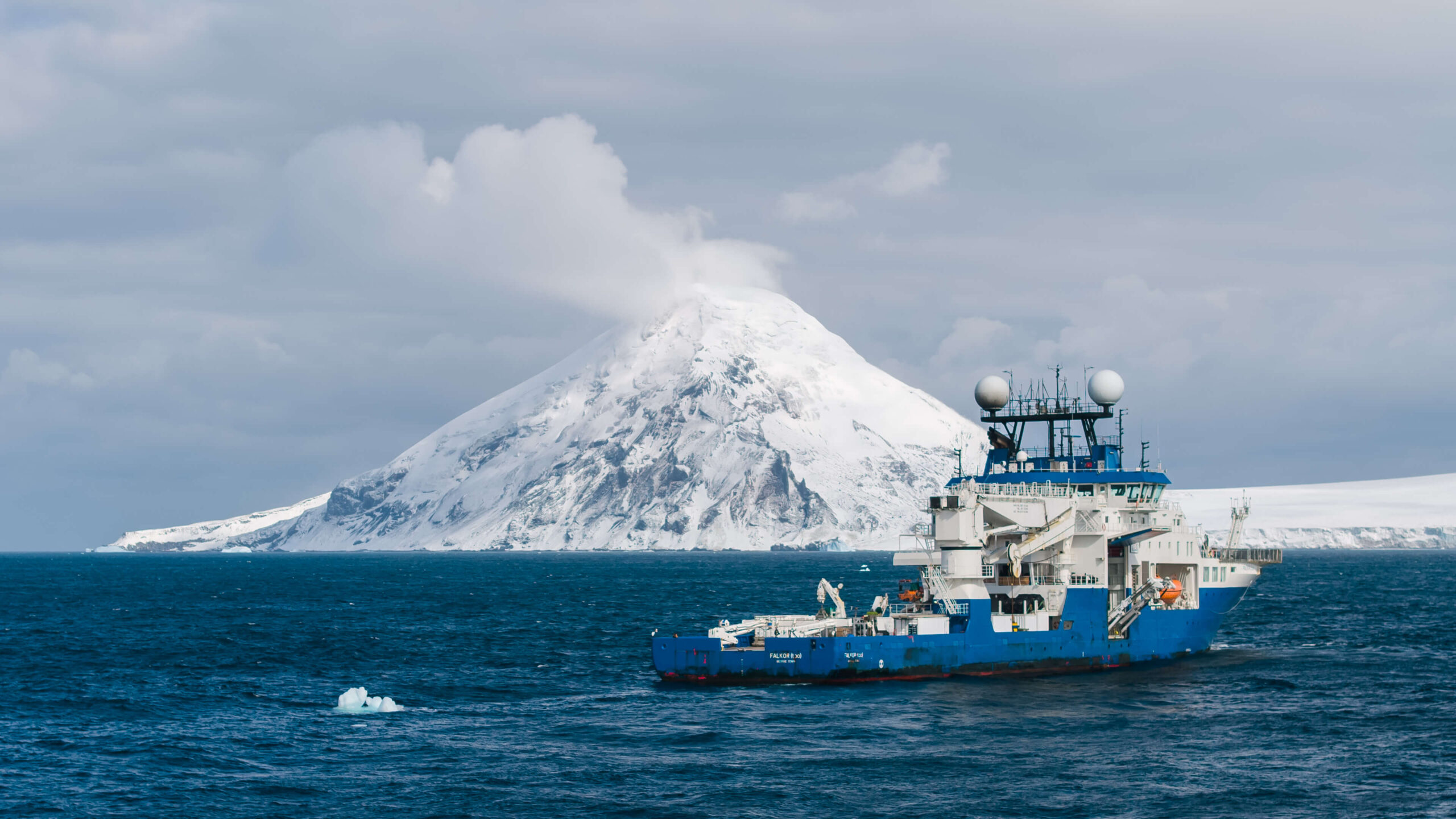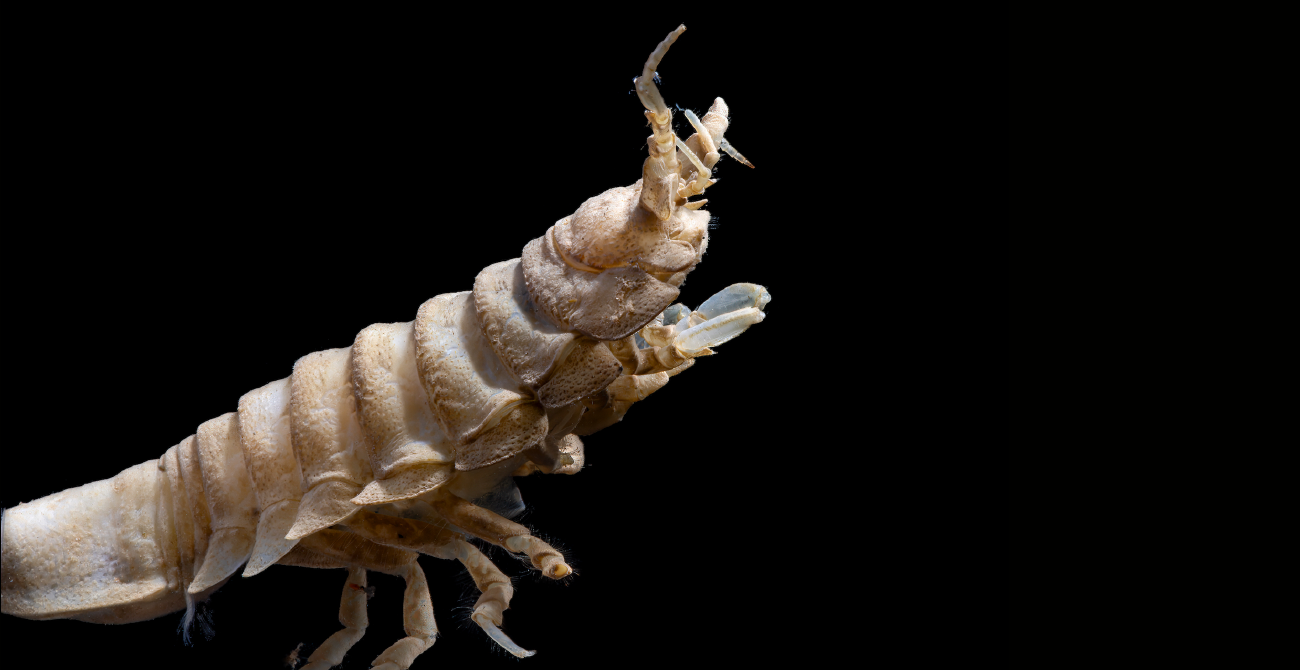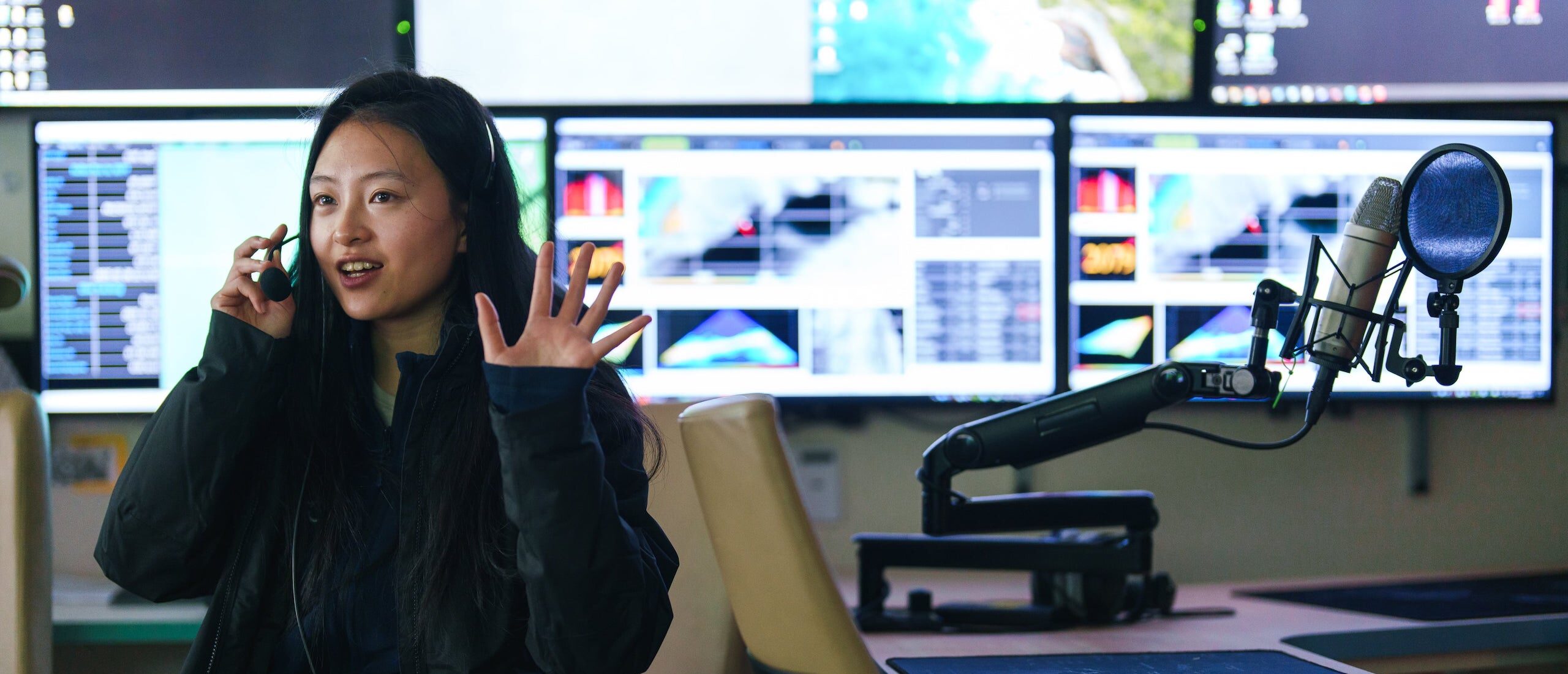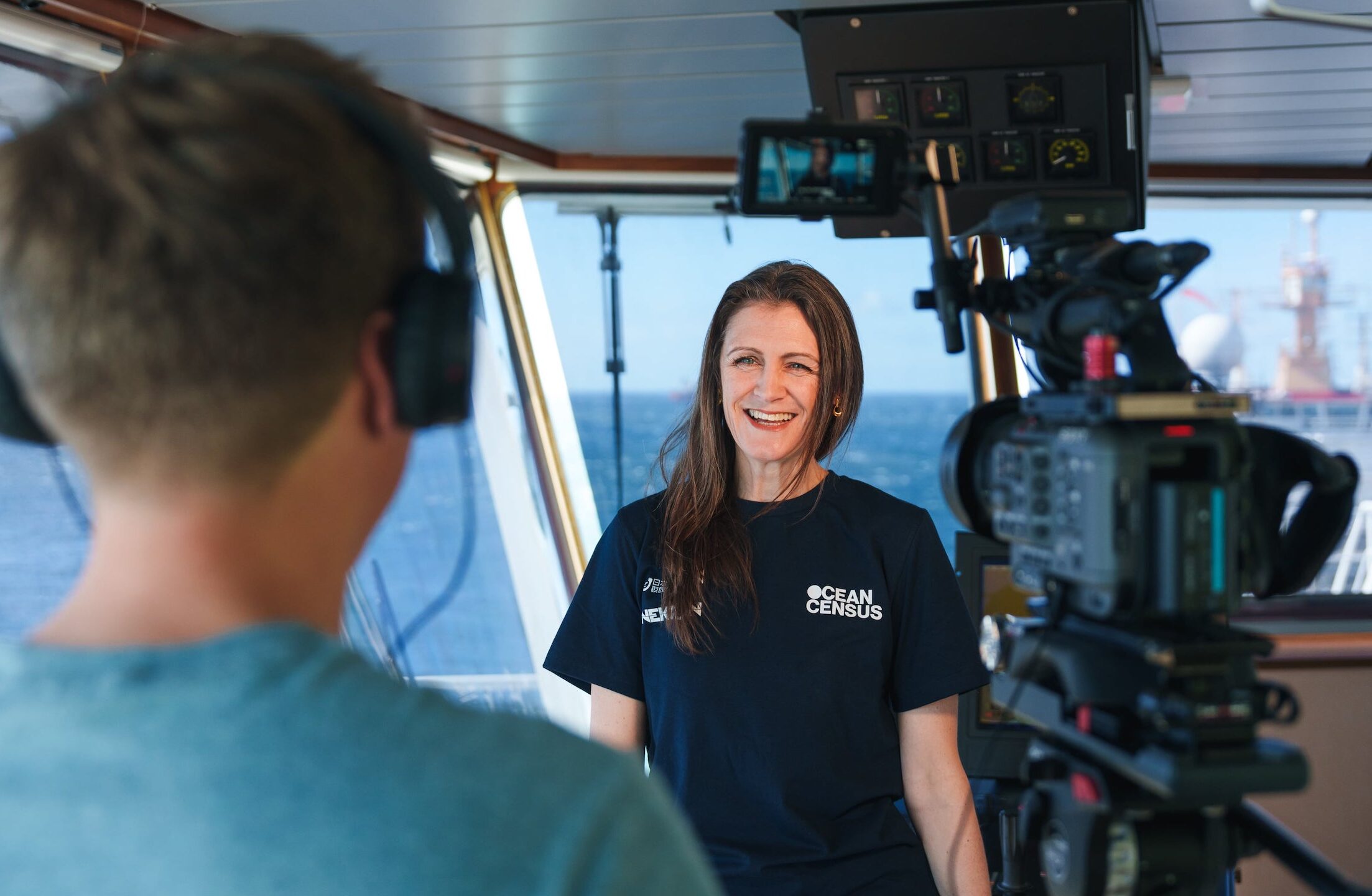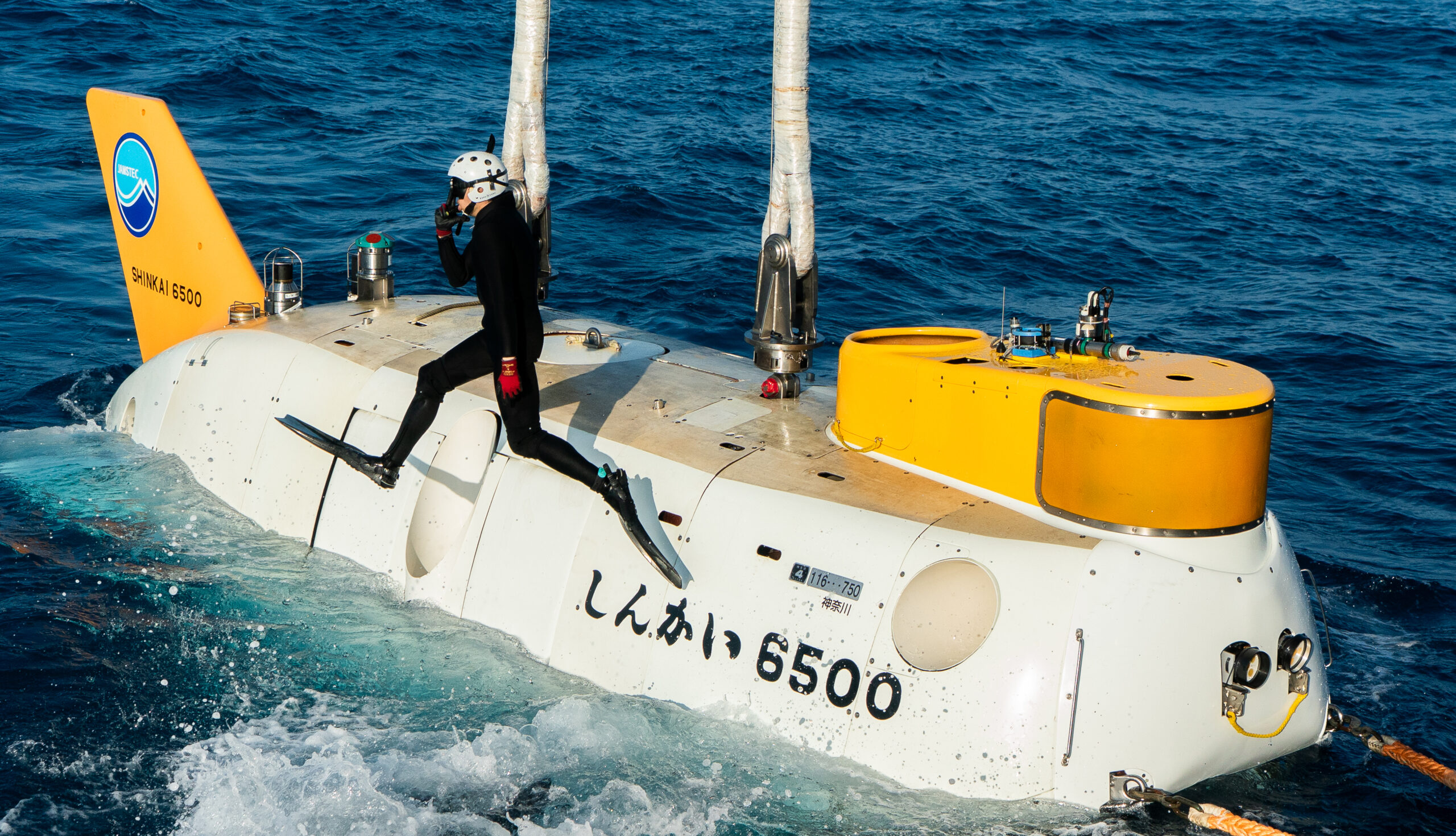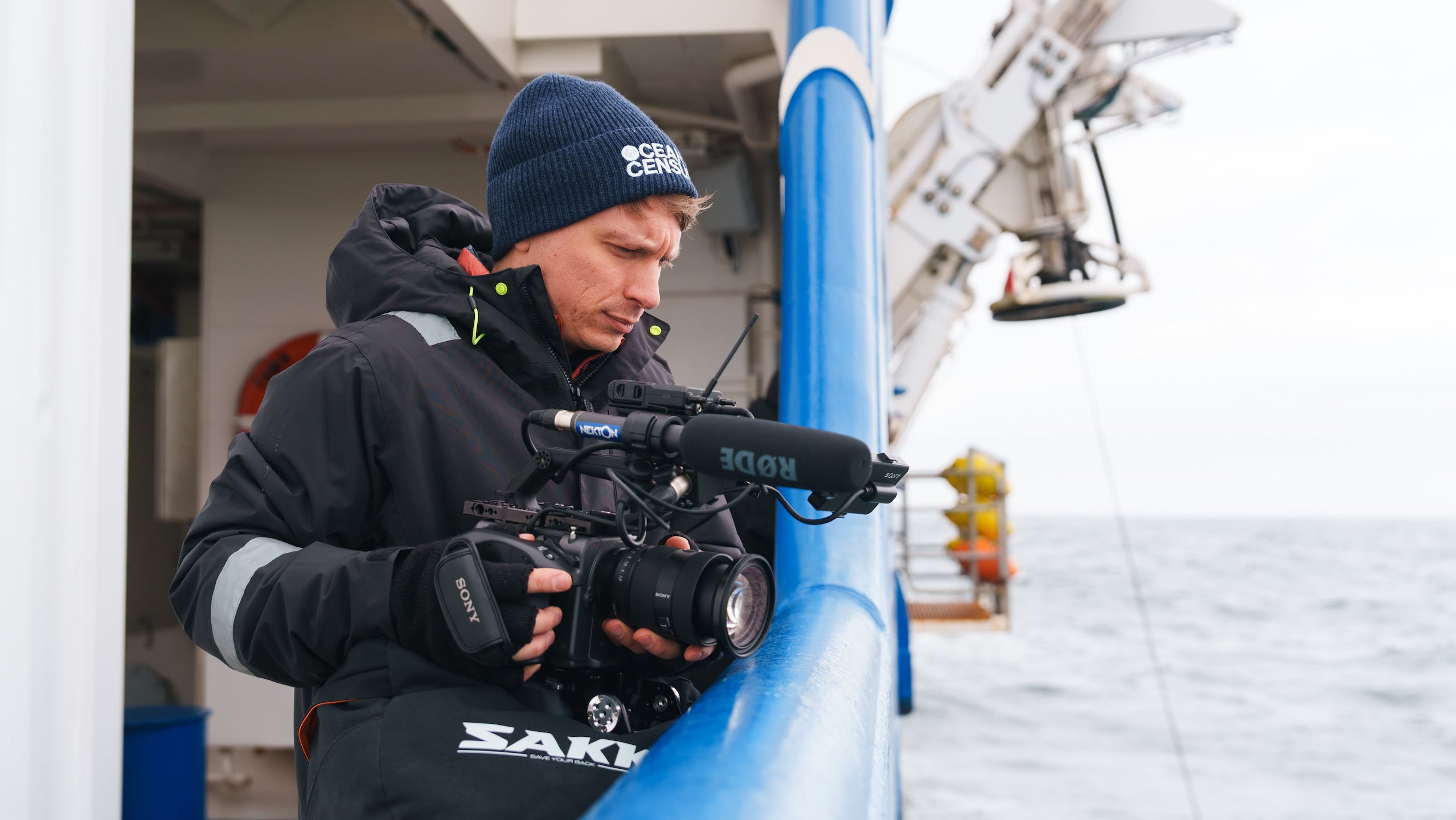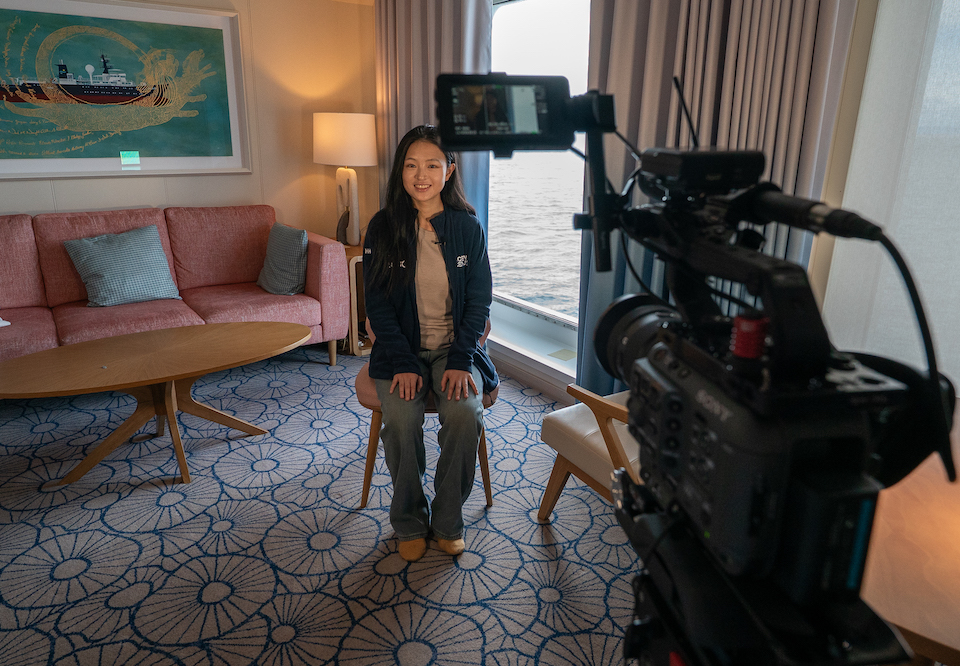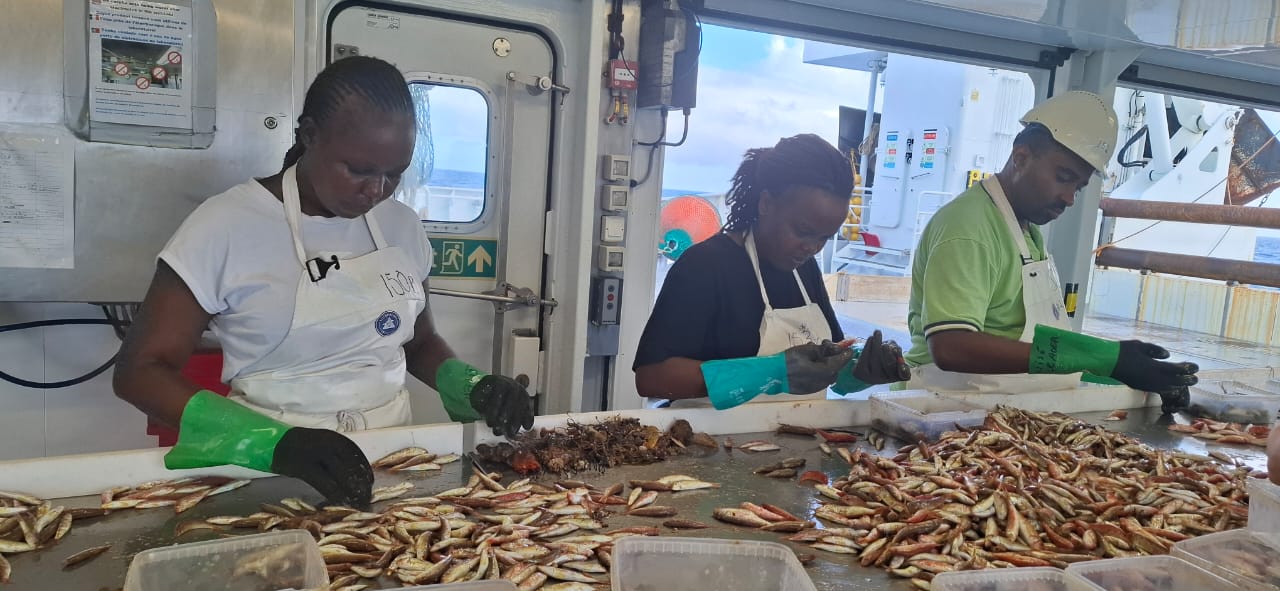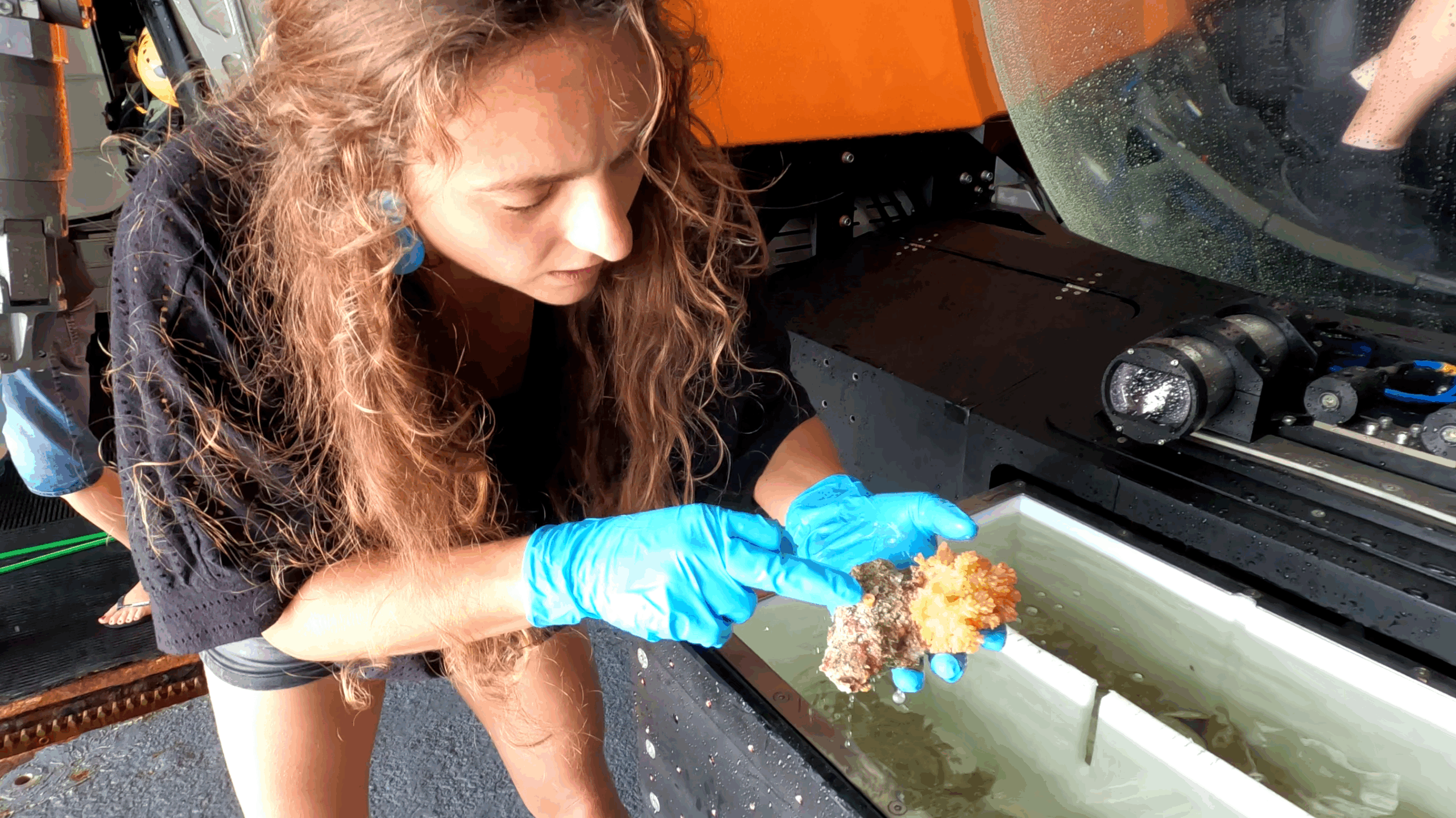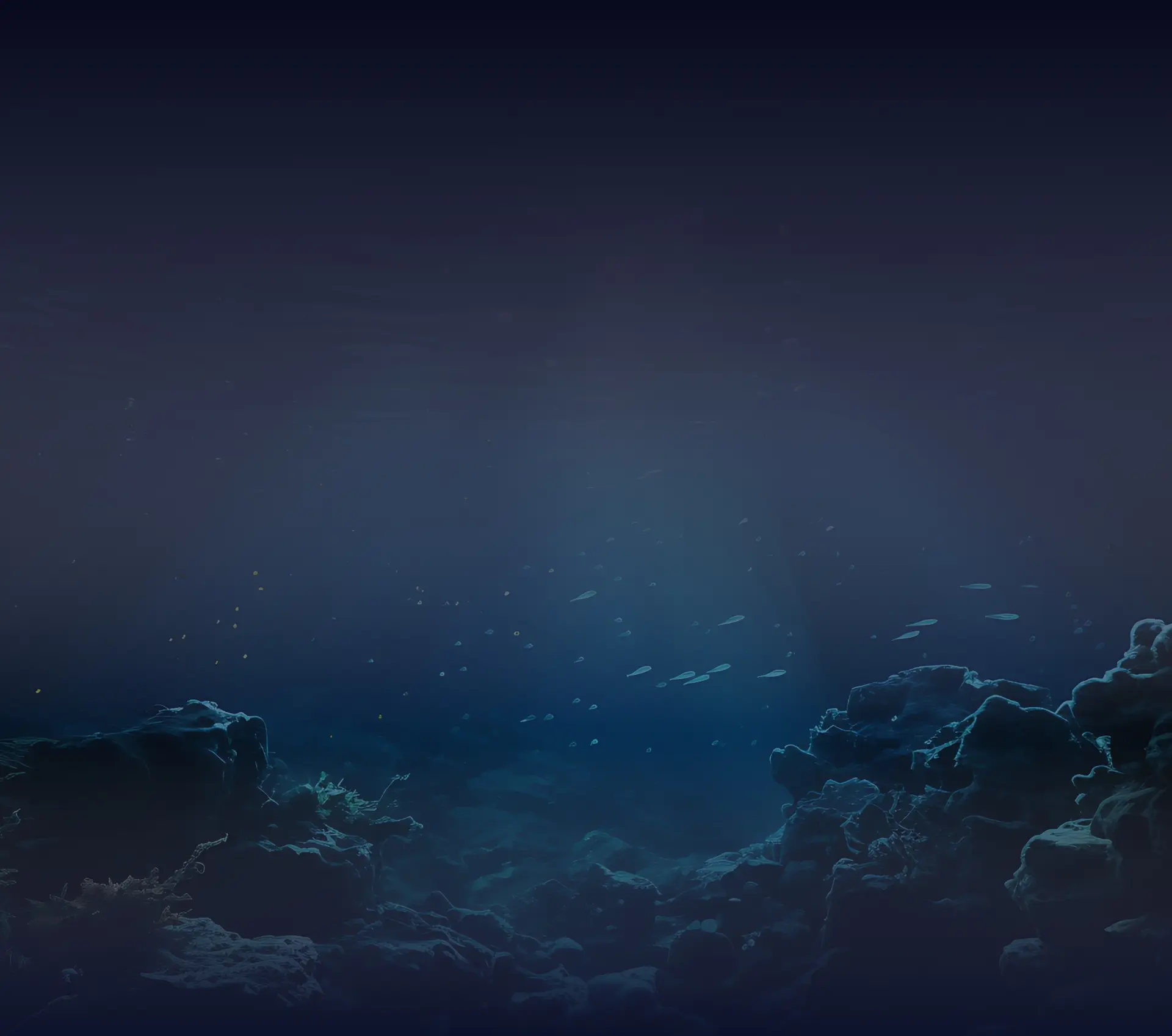
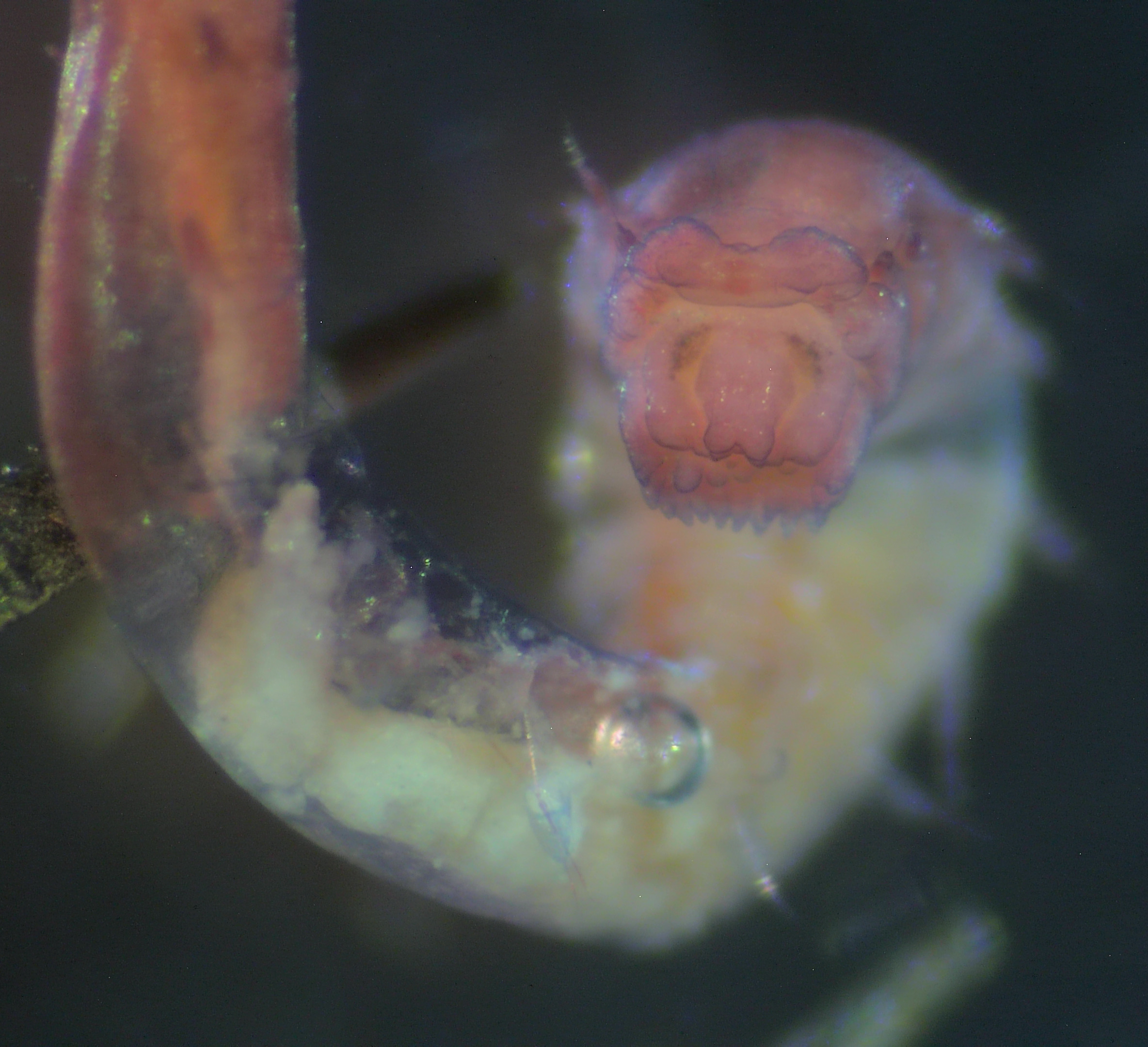
Unearthing Marine Worms | Updates from Dr. Laetitia Gunton at the International Workshop on Polychaetes
Unearthing Marine Worms
Dr. Laetitia Gunton, from the School of the Environment and Life Sciences, University of Portsmouth, is a winner of the Ocean Census Science Event Awards. She is an accomplished marine scientist with over twelve years of international experience. Specialising in deep-sea polychaete worms, her expertise spans the families Ampharetidae and Melinnidae.
Laetitia used the funding from the award to cover travel and subsistence expenses for attending the “International Taxonomic Workshop Dedicated to Polychaetes from the Aleutian Trench”.
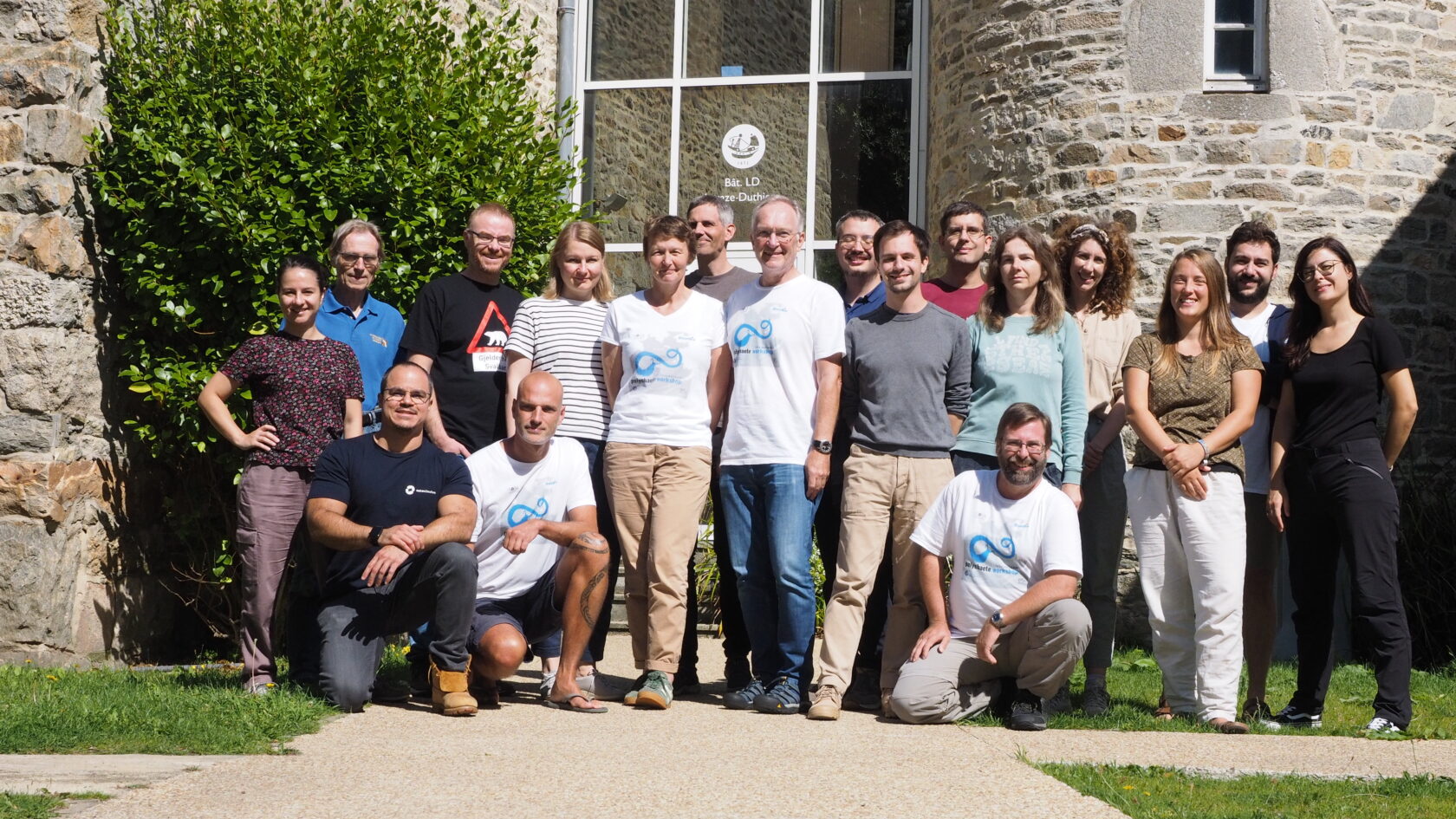
International Polychaete Workshop attendees Image Credit: Dieter Fiege
In the first week of September, 19 polychaete (marine worm) taxonomists, from 13 institutions across Europe and the USA, wormed their way to the Station Biologique de Roscoff in northern France. This well-equipped marine station is jointly run by the National Centre for Scientific Research (CNRS) and the Sorbonne University (Paris).
The event began with presentations detailing the background of the Aleutian Trench Biodiversity Studies expedition and the work of the Station Biologique de Roscoff. This was followed by three days of workshops, where taxonomists performed detailed taxonomic analysis on the Aleutian Trench polychaete specimens.
Key Insights from Studying Polychaetes in the Aleutian Trench
Dr. Laetitia: The workshop aimed to discover, identify and document polychaete species from the Bering Sea and Aleutian Trench in the north-eastern Pacific. The workshop highlighted the importance of this region for biodiversity research, enabling taxonomists to perform detailed morphological studies, take tissue samples for future molecular analysis and foster collaboration for future deep-sea taxonomy projects.
Importance of the Aleutian Trench for Marine Biodiversity Research
Dr. Laetitia: The species diversity and faunal composition from Aleutian Trench, and its surrounding region, has been very poorly documented. Prior to 2022, the only biological sample collected from the trench at hadal depths was a single box core sample(1).
This deep-sea region is of particular interest, it is bordered by the Aleutian Islands and the Bering Sea in the north, and the North Pacific Basin in the south. Some of the highest biomass densities of seafloor organisms in the world are found in the Bearing Sea(2). Furthermore, large-scale human induced ecosystem impacts have been documented in the Aleutian Island and Bering Sea region(3,4).
Benthic fauna from the Aleutian Trench was sampled systematically for the first time(5) during the pioneering 2022 RV Sonne voyage (‘AleutBio’). Macrofaunal samples were collected using a quantitative box core from a total of 18 stations, ten stations from the abyssal slope (<6000 m) and eight stations from hadal depths (>6000 m).
Approximately 3000 polychaetes were recovered from 40 families.
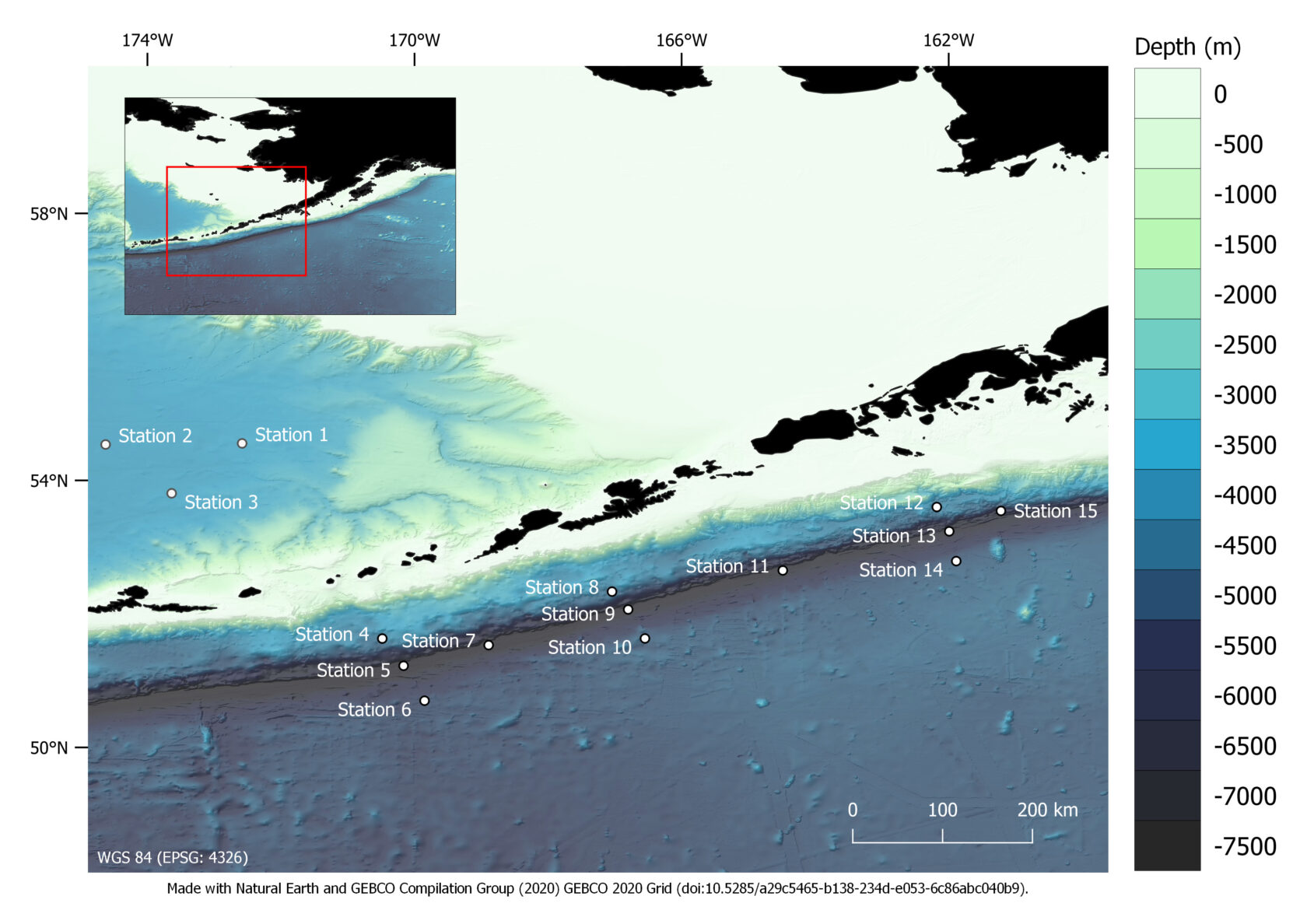
Station map of the Aleutian Trench from RV AleutBio Image credit: Anne-Cathrin Wölfl
Contributions to the Ocean Census
Dr. Laetitia: During the workshop potential new species were identified by taxonomic specialists. Specimens in morphologically good condition were identified for description.
Significant Discoveries and Deep-Sea Species Richness
Dr. Laetitia: Within the polychaete family Ampharetidae, 60 specimens were identified to six genera. Only one specimen, Anobothrus auriculatus, could be named to species level, the others were identified to morphospecies and determined in open nomenclature. Preliminary morphological investigations suggest there may be at least six undescribed species from the family Ampharetidae alone.

Ampharetidae Genus Lysippe
Methods Used for Analysing Polychaete Specimens
Dr. Laetitia: Polychaete families were divided between several international specialists. This is because Polychaeta are so diverse, so taxonomists generally specialise on one family.
I worked on the Ampharetidae alongside my colleague, Tom Alvestad, from University of Bergen, University Museum of Bergen. Ampharetids are typically an abundant and diverse family in deep-sea sediments. We analysed the morphology of the specimens using light microscopes, made detailed notes and captured light images. We identified specimens suitable for molecular work, these samples have been taken to the Senckenberg Museum, Hamburg where tissue sampling and DNA sequencing will be performed.
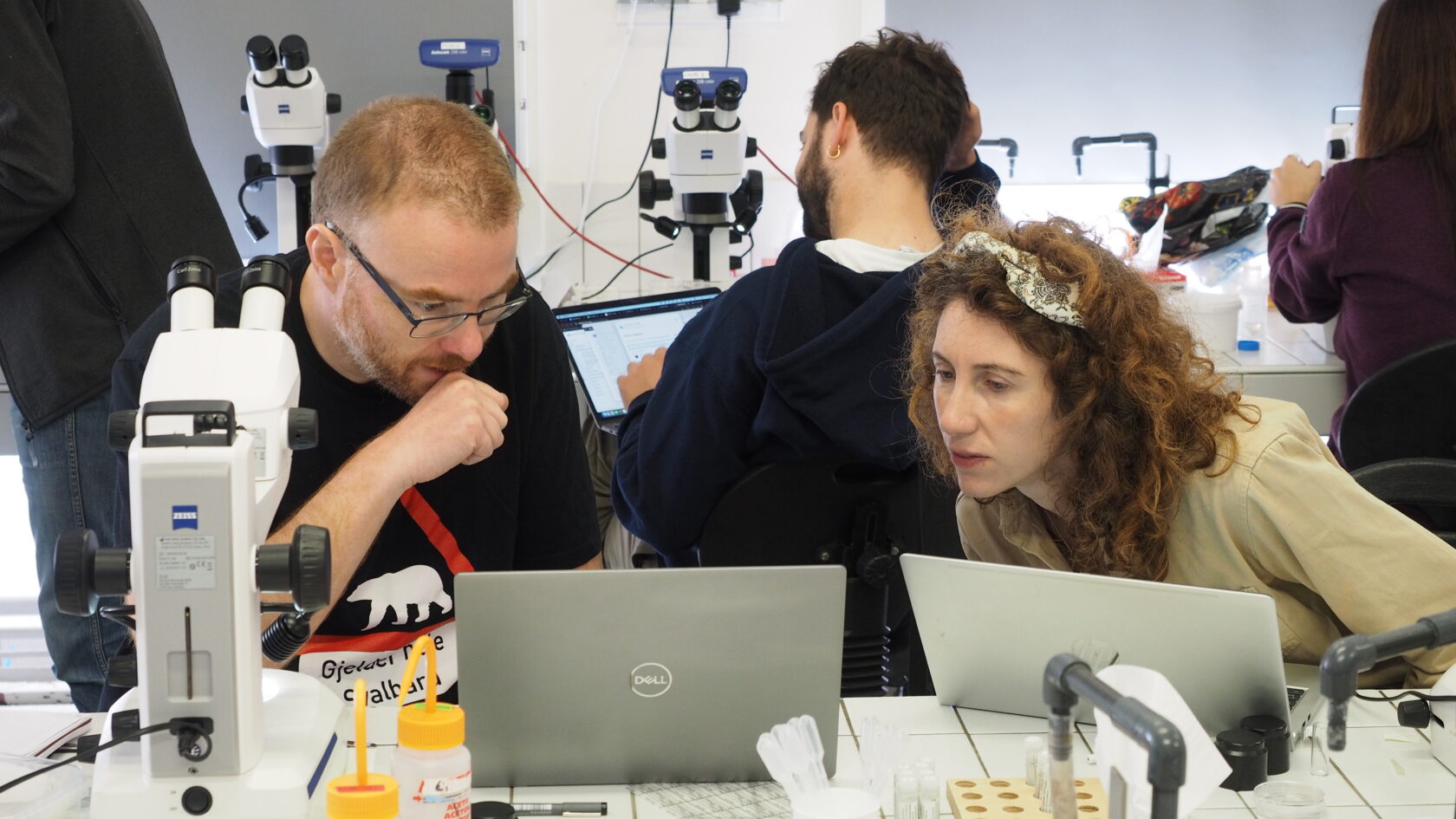
Tom Alvestad and Laetitia Gunton Image Credit: Dieter Fiege
Long-Term Implications and Future Research Directions
Dr. Laetitia: The workshop functioned as a springboard for future polychaete work. Most participants loaned material to take back to their home institutions. I loaned specimens of other families, Amphinomidae and Euphrosinidae, to perform DNA analysis, scanning electron microscopy, and write up detailed species descriptions back in Portsmouth.
All attendees are currently preparing manuscripts for a combined publication to document the polychaete fauna of the Aleutian Trench, this will include species descriptions, occurrence records, and genetic data. Furthermore, we are preparing a unified genetic barcode library in Barcode of Life Data Systems for the material studied in the workshop. These publications will be the first detailed account of polychaete species from the area.
The workshop was a fantastic opportunity to discuss polychaete taxonomy with other specialists, exchange ideas, and to maintain a close working network within the small polychaete community. I met colleagues in person who I had only corresponded with via email. Very importantly, key knowledge was transferred from senior and mid-career researchers to early career researchers, ensuring that skills and information was disseminated widely.
I left the workshop feeling inspired, motivated and better connected with my fellow worm taxonomists.
Keep up to date with other stories from the Ocean Census award winners.
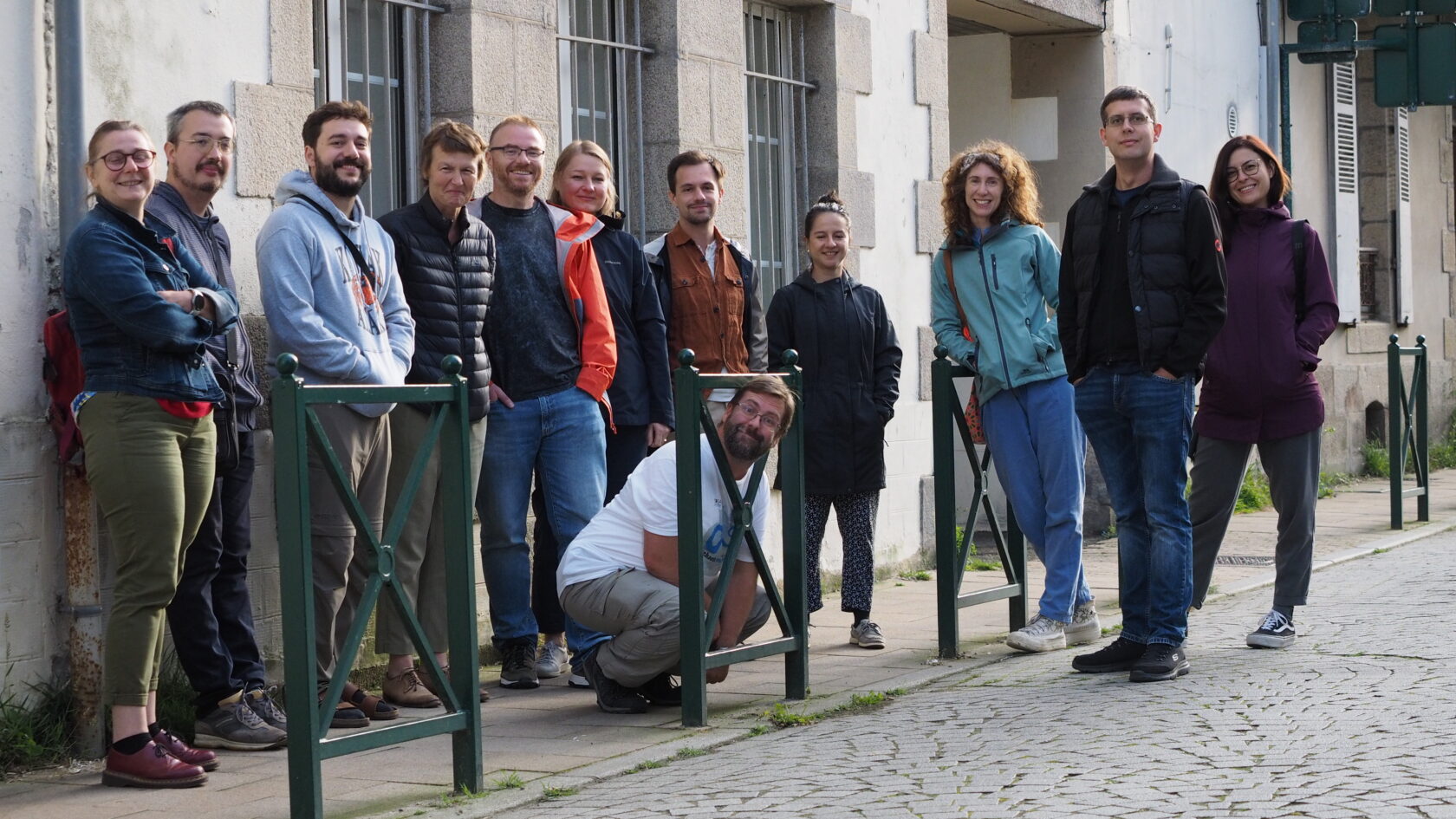
International Polychaete Workshop attendees Image Credit: Dieter Fiege
Thank you’s from Dr. Laetitia Gunton
I would like to thank the workshop organisers Dr Karin Meißner (Senckenberg Museum, DZMB Hamburg) and Dr Nicolas Lavesque (Station Marine d’Arcachon, France), and the local organisers from Station Biologique de Roscoff Céline Houbin, Elodie Bourrigaud, Franck Plassard, Hélène Huelvan, and Cécile Cabresinat. Many thanks to Jan Steger and Bianca Trautwein from Senckenberg Ocean Species Alliance (SOSA) for their support during the workshop. Funding for the workshop came from Senckenberg Research Institute and Museum Frankfurt, SOSA and GfBS (German Association for Biodiversity Research). I would also like to thank The Nippon Foundation – Nekton Ocean Census programme for a travel grant that enabled me to attend the workshop.
References
(1) Jumars, P. A., & Hessler, R. R. (1976). J. Mar. Res. 34(4), 547–560.
(2) Highsmith, R. C., & Coyle, K. O. Nat. 344, 862 (1990).
(3) Barron et al., (2003). https://doi.org/10.1016/S0048-9697(03)00140-2
(4) Anthony et al., (1999). https://doi.org/10.1002/etc.5620180925
(5) Brandt, A. (2022). https://doi.org/10.48433/cr_so293
Related News
Join the census
The Ocean Census Alliance unites national and philanthropic marine institutes, museums, and universities, backed by governments, philanthropy, business and civil society partners.
